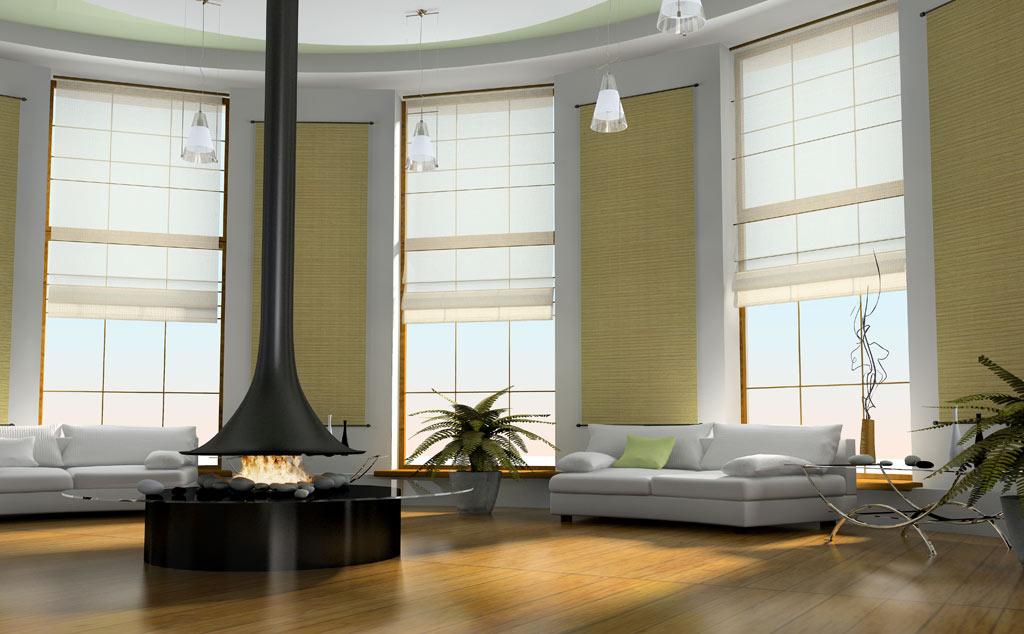
Roman blinds – the type of fabric blinds that draw up into pleats – are a popular alternative to curtains. As you might have assumed, these blinds actually did originate in ancient Rome.
Early beginnings: origins of Roman blinds
It’s said that Roman blinds were devised to keep homes dust-free after construction was started on the Colosseum in Rome, over 2 000 years ago.
Prior to this, Romans would hang damp cloth in front of their windows. Windows at this stage had no glass. So the coverings were needed to keep out the dust kicked up by horse-drawn carriages and carts, and dirt swept up by the wind.
Cloth curtains were no match for the volumes of dust released during the grinding of stone for the building of the Colosseum.
As a potential solution, someone devised a window covering made of lightweight strips of fabric – the Roman blind.
Roman blinds provided a simple solution to a common problem, and their use quickly spread throughout the Roman Empire. As well as screening out dust, they helped keep homes cool in the hot Mediterranean summer.
Evolution of Roman blinds
Although Roman blinds were created for functional reasons, they became more ornate. Decorated with various patterns and colours, they could serve as a décor accent as much as an effective window covering.
Roman blinds evolved to include a drawstring operation, created by fitting strings to slats or dowel rods between the strips of fabric. This allowed the blinds to be raised and lowered easily. Unlike the Roman blinds we have today, these earlier blinds folded back horizontally, away from the wall.
Since then, there have been various alterations to the basic design of the Roman blind. However, the principle remains the same.
Use in modern homes
Roman blinds remain a popular choice in modern homes. They’re available in a wide variety of styles and may be made from a range of materials, including bamboo, hemp, silk, reinforced cotton and other fabrics.
It’s worth considering ease of cleaning when you choose a particular material and finish for blinds –certain materials are more sensitive than others and some professional dry cleaning only.
Cleaning Roman blinds
Roman blinds should be deep cleaned periodically. Unfortunately, they’re heavy and unwieldy to work with – and before they’re washed, it’s necessary to remove the cords, unpick the lining of the blinds and remove the dowels, which are sewn into the lining.
Generally, it’s best to leave washing Roman blinds to the experts. In between, however, regular maintenance can help keep the blinds in top condition.
If you have fabric blinds that are washable with water, you can spot-clean them with soda water or a store-bought cleaner between washes.
Also regularly use the brush attachment on a vacuum to remove dust, ensuring you get the nozzle between the folds. Always test your cleaning method on a small, inconspicuous area first and avoid vigorous rubbing, to make sure you don’t cause discolouration or other unsightly damage to the fabric.



